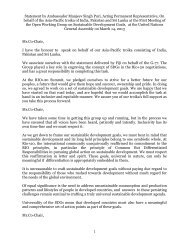STATE OF THE WORLD'S CITIES 2012/2013 Prosperity
STATE OF THE WORLD'S CITIES 2012/2013 Prosperity
STATE OF THE WORLD'S CITIES 2012/2013 Prosperity
Create successful ePaper yourself
Turn your PDF publications into a flip-book with our unique Google optimized e-Paper software.
State of the World’s Cities <strong>2012</strong>/<strong>2013</strong><br />
5.0<br />
4.5<br />
4.0<br />
3.5<br />
3.0<br />
2.5<br />
2.0<br />
1.5<br />
1.0<br />
0.5<br />
0.0<br />
5.0<br />
4.5<br />
4.0<br />
3.5<br />
3.0<br />
2.5<br />
2.0<br />
1.5<br />
1.0<br />
0.5<br />
0.0<br />
FACT<br />
Figure 2.1.2<br />
Trends in urbanization and national GDP per capita – for various levels of income, 1960–2010<br />
GDP per capita<br />
5.0<br />
High-income countries, 1960–2010 Higher middle-income countries, 1960–2010<br />
4.5<br />
5.0<br />
Lower middle-income countries, 1960–2010 Low-income countries, 1960–2010<br />
4.5<br />
1960<br />
1965<br />
1970<br />
1975<br />
1980<br />
1985<br />
1990<br />
1995<br />
2000<br />
2005<br />
2010<br />
Note: Both time series are indexed to 1 in the initial year. The y value of each series shows the unit change with respect to the base year.<br />
Source: UNDESA (<strong>2012</strong>) urbanization; World Bank (<strong>2012</strong>) GDP per capita.<br />
In the USA, New York City contributes about 10 per cent<br />
of the country’s GDP and only 6.3 per cent of the total<br />
population. The 10 US cities with the largest GDP produce<br />
36 per cent of the country’s goods and services and 24 per cent<br />
of the total population. 8 São Paulo – Brazil’s economic and<br />
financial capital accounts for 10 per cent of the population, but<br />
25 per cent of national GDP. 9 In China, the 53 metropolitan regions<br />
with populations over one million contribute about 62 per cent<br />
of national non-farm GDP and 29 per cent of the country’s<br />
population. In Kenya, Nairobi, with 8.4 per cent of the country’s<br />
population, accounts for almost 20 per cent of the country’s<br />
GDP. 10 Worldwide, the largest 100 cities accounted for around<br />
30 per cent of the total production of goods and services in 2008,<br />
with the top 30 cities alone accounting for around 18 per cent. 11<br />
38<br />
4.0<br />
3.5<br />
3.0<br />
2.5<br />
2.0<br />
1.5<br />
1.0<br />
0.5<br />
0.0<br />
4.0<br />
3.5<br />
3.0<br />
2.5<br />
2.0<br />
1.5<br />
1.0<br />
0.5<br />
0.0<br />
Urban population (%)<br />
1960<br />
1965<br />
1970<br />
1975<br />
1980<br />
1985<br />
1990<br />
1995<br />
2000<br />
2005<br />
2010<br />
Lastly, Kenya illustrates the experience of the limited<br />
number of low-income countries, mostly in Sub-Saharan<br />
Africa, where productivity<br />
growth was negligible even<br />
though urbanization rates<br />
continued to rise. 7<br />
POLICy<br />
FACTORS AFFECTING<br />
URBAN PRODUCTIvITy<br />
The factors determining<br />
urban productivity can<br />
be split into two broad<br />
categories: external factors<br />
that give cities additional<br />
comparative advantage,<br />
including national and<br />
Despite<br />
differences<br />
in the pace of<br />
productivity growth<br />
with respect to<br />
urbanization, the urban<br />
dominance in economic<br />
productivity is evident<br />
across countries. In<br />
other words, urban<br />
areas contribute<br />
disproportionately to<br />
national productivity.




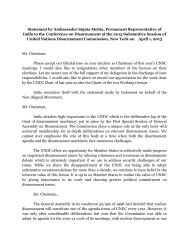

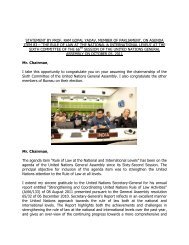
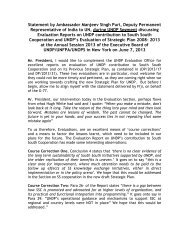





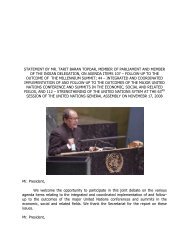

![1 statement by dr.[mrs] kakoli ghosh dastidar - Member States Portal](https://img.yumpu.com/27526598/1/190x245/1-statement-by-drmrs-kakoli-ghosh-dastidar-member-states-portal.jpg?quality=85)
